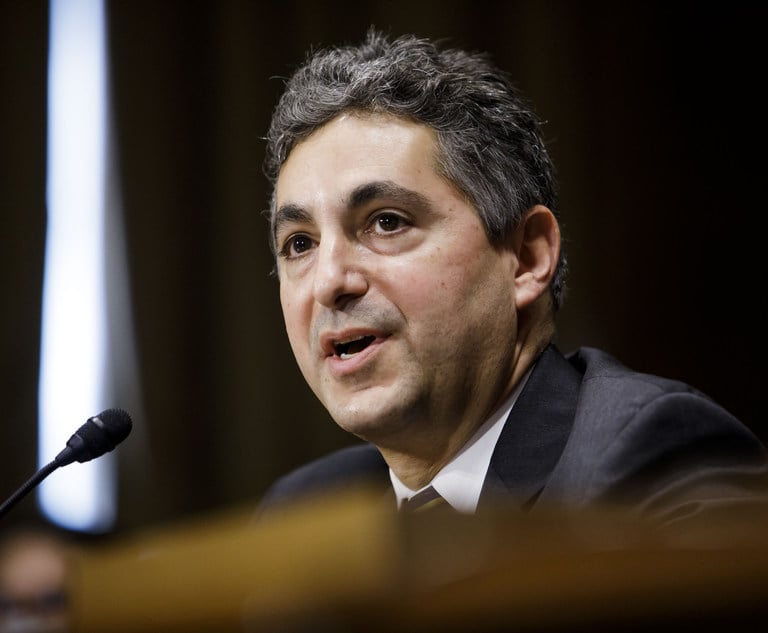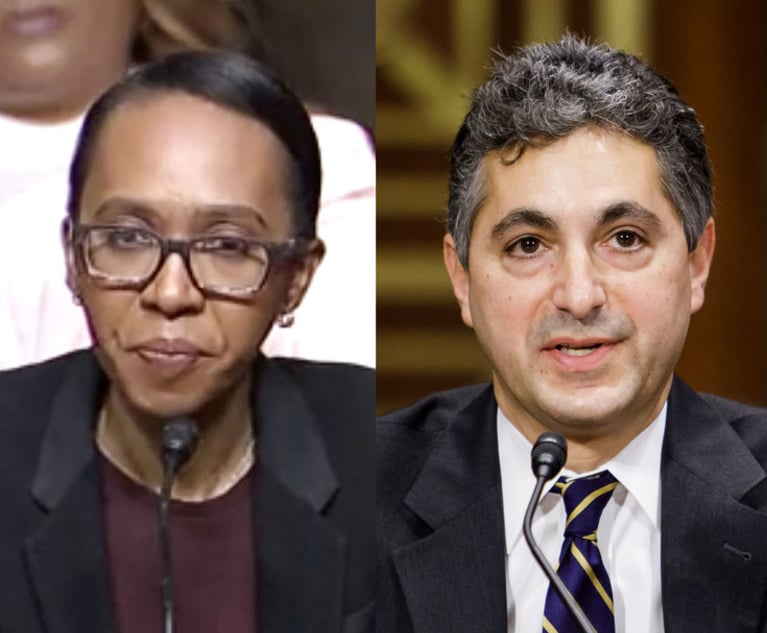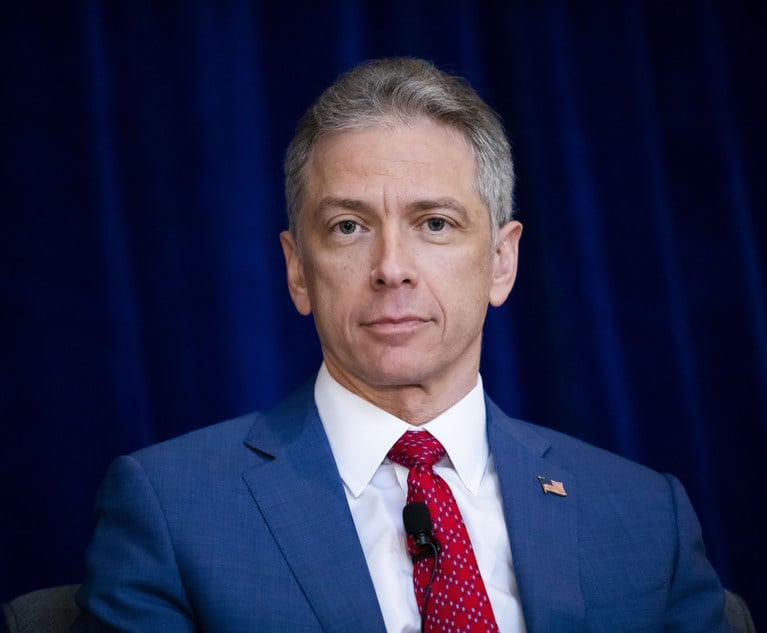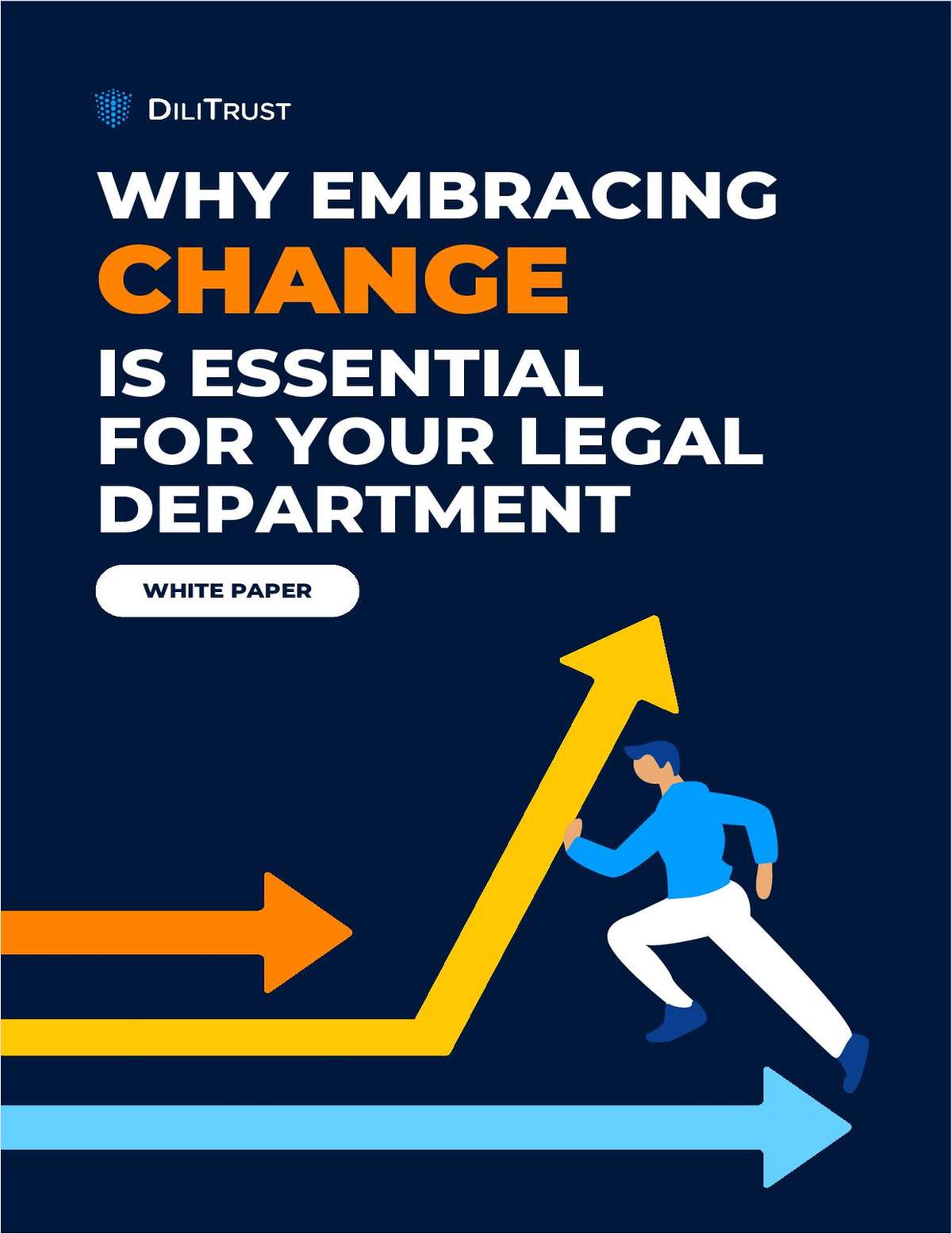Skilled in the Art: Will Supreme Court Dunk on Ninth Circuit Copyright Ruling + Your Tax Dollars at Work: U.S. Ordered to Pay $4.3 Million Fee Award
With Oracle and Google on the horizon, SCOTUS may take up a more fun case involving a 35-year-old photo of Michael Jordan.
March 22, 2019 at 04:33 PM
9 minute read
Welcome to Skilled in the Art. I'm Law.com IP reporter Scott Graham. Later this year the U.S. Supreme Court will have to decide (again) whether to take up what some call the copyright case of the decade, the titanic struggle between Oracle and Google over Java APIs. But in the meantime, there are signs the court might take up a more fun case involving a 35-year-old photo of Michael Jordan. I've got details below. Plus, you'll never guess who just got hit with a $4.3 million attorney fee award for unreasonable patent infringement (hint: starts with United, ends with States). As always, you can email me your thoughts and follow me on Twitter.

High Court Might Throw Down on MJ Copyright
Could a copyright case about an iconic photograph of Michael Jordan prove irresistible to a basketball-loving Supreme Court? Especially if it's a chance to dunk on the Ninth Circuit? We might have an answer Monday morning.
The justices have relisted for Friday's conference Rentmeester v. Nike, a case about a 35-year-old photograph of Jordan that photography groups are framing as a referendum on their art.
The Ninth Circuit's 2-1 decision in the case “treats photography as a second-class art and denigrates photographers' artistic judgments,” attorneys for photojournalist Jacobus Rentmeester, led by Deepak Gupta of Gupta Wessler, argue in their cert petition. They have amicus support from the American Society of Media Photographers, among others.
A Kirkland & Ellis team led by partner Dale Cendali is trying to D up for Nike. They say Nike's version of the photo—on which the company based its famous “jumpman” logo—is not substantially similar to Rentmeester's shot. “Petitioner effectively requests special treatment for photographs, beyond what this court has afforded other creative works—whereby all questions of infringement would have to go to a jury,” Nike argues.
Rentmeester captured the original shot for a Life magazine spread on American athletes who would be featured in the 1984 Olympics. He photographed Jordan on a grassy knoll on the University of North Carolina campus, arranging for him to leap in a style inspired by ballet's grand jeté.
Nike partly recreated the photo the following year, having Jordan strike a nearly identical pose, but against different lighting and set against the Chicago skyline. Rentmeester alleges that when he threatened to sue, Nike paid him $15,000 to use the photo in North America, for just two years. Instead, Nike used the photo worldwide for much longer, eventually morphing it into the jumpman logo used on billions of dollars worth of merchandise, Rentmeester alleges. He originally claimed that both the photograph and logo infringed, but has dropped his claims over the logo at the Supreme Court.
Ninth Circuit Judge Paul Watford held that Rentmeester's photograph was entitled to broad copyright protection. But he said there were enough differences in the selection and arrangement of elements such as lighting, background and angle toward the basket that the two photos are not substantially similar as a matter of law. Rentmeester “cannot prohibit other photographers from taking their own photos of Jordan in a leaping, grand jeté-inspired pose,” Watford wrote.
Judge John Owens dissented, saying the case shouldn't be decided on the pleadings. “Whether the Nike photo is substantially similar is not an uncontested breakaway layup,” Owens wrote, “and therefore dismissal of that copyright infringement claim is premature.”
Owens' use of metaphor wasn't surprising. Before going to law school, he was a marketing assistant for the Golden State Warriors and penned some articles for basketball magazines.
Several Supreme Court justices are likewise known to enjoy a game of hoops, particularly on the Highest Court in the Land. Will Rentmeester's case have enough game for them? We should find out Monday.
|
Your Tax Dollars at Work:
|U.S. Must Pay $4.3 Million Fee Award
Any day now we'll hear from the Supreme Court on whether the federal government is a “person” who can use the America Invents Act to challenge patent validity at the Patent Trial and Appeal Board.
The answer probably can't come soon enough for Uncle Sam, which got tagged last week with a $4.3 million attorney fee award in a patent infringement case in the Court of Federal Claims. It's believed to be the first award under a 1996 law that provides fee shifting for independent inventors, small businesses and nonprofits who sue the government under 28 USC 1498.
Ropes & Gray partner Matt Rizzolo said there probably haven't been many patent owners who meet that criteria and have the resources to see litigation all the way through to judgment. His LinkedIn commentary on the opinion prompted John Fargo, a former director of IP staff at the Justice Department's civil division, to say he was aware of only two previous decisions on fees, both of which had gone in the government's favor.
To me, Hitkansut v. United States seems like a typical hotly contested patent case, only with the government playing the role of the big, bad corporate infringer.
Inventor Donna Walker patented a novel method for strengthening manufactured materials. She entered into a three-year non-disclosure agreement with the Department of Energy's Oak Ridge National Laboratory. Oak Ridge then incorporated her idea into its thermomagnetic processing program, winning research funding, obtaining patents, authoring publications and receiving awards, all without crediting Walker or providing her additional compensation.
Walker assigned the patent to Hitkansut LLC and sued under 28 U.S.C. 1498. After several years of litigation, the Court of Federal Claims found the patent valid and infringed. It awarded a $200,000 upfront licensing fee, but rejected Hitkansut's claim for about $5 million in royalties. Oak Ridge had earned some $45 million from the technology, but all of it came from research funding rather than commercial use, so royalties were unavailable.
Hitkansut then moved for $4.5 million in attorneys fees and expenses—a tall order given the government need only show its position was “substantially justified” to defeat the claim.
The government argued that its infringing conduct was a '“rightful exercise of the power of eminent domain,” that it had raised legitimate issues during litigation such as patent eligibility, and that it had succeeded in neutralizing 95 percent of Hitkansut's damages request.
Judge Charles Lettow was not persuaded. Raising patent eligibility “certainly was legitimate, but the government's specific arguments lacked substantial justification because they were unsupported by the facts,” he wrote. As for the successful royalty argument, that “does not alter whether the government was substantially justified in arguing that no infringement occurred or that the patent was invalid,” Lettow concluded.
Although Lettow shaved a couple hundred thousand from Hitkansut's fee request, it's still a big win for the Dickinson Wright team led by partners John S. Artz and John A. Artz and associate Franklin Smith. The government was represented by Gary Hausken, the director of DOJs' commercial litigation branch, and Assistant Attorney General Joseph Hunt.

More Section 101 Splits at the Federal Circuit
Federal Circuit Judge Bob Mayer described the court's Section 101 jurisprudence as “guerrilla warfare” during oral argument earlier this month. In the last week, it's begun to feel more like open warfare.
I wrote on Wednesday about a divided opinion over SRI International patents that are worth at least $30 million. Judge Kara Stoll held in SRI International v. Cisco Systems that the patents represent a technical solution to the technical problem of security on computer networks. Judge Alan Lourie dissented, criticizing the “result-focused, functional claims.” Fish & Richardson had the win for SRI.
Last week another panel split over the patent eligibility of a dietary supplement that's designed to increase anaerobic capacity. Judge Kimberly Moore ruled that, at least as construed by patent owner Natural Alternatives International, U.S. patents 5,965,596 and 8,470,865 are eligible because the claim specification provides a specific method for calculating dosage based on a subject's weight. “This goes far beyond merely stating a law of nature, and instead sets forth a particular method of treatment,” she wrote in Natural Alternatives International v. Creative Compounds.
Judge Jimmie Reyna dissented, saying the method of treatment isn't spelled out in the patent claims themselves. He asked “whether the time has come for this court to reconsider whether a Rule 12(c) motion based on Section 101 should be decided before claim construction.”
That was the sound of Silicon Valley gasping.
Kevin Bell of Porzio, Bromberg & Newman had the winning argument for Natural Alternatives, with help on the briefs from attorneys at Bass, Berry & Sims.
At least PTO Director Andrei Iancu has resolved all of this confusion at the Patent Office, with his new guidance for patent examiners and the PTAB. The PTAB just designated as “informative” a recent decision interpreting the guidance and … oh wait, it's from a divided panel.
In Ex Parte Smith, Administrative Patent Judge Phillip Bennett ruled that a claim directed to a hybrid system of trading securities, based on concurrent electronic and open-outcry mechanisms, is patent eligible. The claim limitations “integrate the recited judicial exception of derivative trading into a practical application,” Bennett concluded.
APJ Hung Bui dissented, saying that under both the Supreme Court's Alicedecision and the new PTO guidance, the claims fall “squarely within the realm of abstract ideas.”
Glad that's settled.
|
Alston & Bird Adds to Its L.A. Office
IP litigator Yuri Mikulka has joined Alston & Bird's Los Angeles office from Manatt, Phelps & Phillips. She brings more than 20 years' experience representing U.S. and multinational companies in a broad range of IP and commercial disputes.
Mikulka is a member of the governing body of the ABA's Section of Litigation, a member of the executive committee of the L.A. Chapter of the Federal Bar Association, and co-chair of the IP committee of the National Asian Pacific American Bar Association.
“Yuri is an incredibly well-regarded litigator and exciting addition to our team who opens new opportunities for our clients in resolving mission-critical intellectual property disputes,” Thomas Wingard, partner-in-charge of Alston & Bird's Los Angeles office, said in a written statement.
That's all from Skilled in the Art this week. I'll see you all again on Tuesday.
This content has been archived. It is available through our partners, LexisNexis® and Bloomberg Law.
To view this content, please continue to their sites.
Not a Lexis Subscriber?
Subscribe Now
Not a Bloomberg Law Subscriber?
Subscribe Now
NOT FOR REPRINT
© 2024 ALM Global, LLC, All Rights Reserved. Request academic re-use from www.copyright.com. All other uses, submit a request to [email protected]. For more information visit Asset & Logo Licensing.
You Might Like
View All
Skilled in the Art With Scott Graham: I'm So Glad We Had This Time Together

Design Patent Appeal Splinters Federal Circuit Panel + Susman Scores $163M Jury Verdict + Finnegan Protects Under Armour's House
Trending Stories
- 1Clifford Chance Hikes Partner Pay as UK Firms Fight to Stay Competitive on Compensation
- 2Judicial Conduct Watchdog Opposes Supreme Court Justice's Bid to Withdraw Appeal of Her Removal
- 3Lessons in Mediation & Negotiation: Attorneys' Reflections on Jimmy Carter
- 4Legal Issues to Watch in the US Appeals Courts in 2025
- 5Ex-MoviePass CEO Submits to Ban, Settling SEC Allegations
Who Got The Work
Michael G. Bongiorno, Andrew Scott Dulberg and Elizabeth E. Driscoll from Wilmer Cutler Pickering Hale and Dorr have stepped in to represent Symbotic Inc., an A.I.-enabled technology platform that focuses on increasing supply chain efficiency, and other defendants in a pending shareholder derivative lawsuit. The case, filed Oct. 2 in Massachusetts District Court by the Brown Law Firm on behalf of Stephen Austen, accuses certain officers and directors of misleading investors in regard to Symbotic's potential for margin growth by failing to disclose that the company was not equipped to timely deploy its systems or manage expenses through project delays. The case, assigned to U.S. District Judge Nathaniel M. Gorton, is 1:24-cv-12522, Austen v. Cohen et al.
Who Got The Work
Edmund Polubinski and Marie Killmond of Davis Polk & Wardwell have entered appearances for data platform software development company MongoDB and other defendants in a pending shareholder derivative lawsuit. The action, filed Oct. 7 in New York Southern District Court by the Brown Law Firm, accuses the company's directors and/or officers of falsely expressing confidence in the company’s restructuring of its sales incentive plan and downplaying the severity of decreases in its upfront commitments. The case is 1:24-cv-07594, Roy v. Ittycheria et al.
Who Got The Work
Amy O. Bruchs and Kurt F. Ellison of Michael Best & Friedrich have entered appearances for Epic Systems Corp. in a pending employment discrimination lawsuit. The suit was filed Sept. 7 in Wisconsin Western District Court by Levine Eisberner LLC and Siri & Glimstad on behalf of a project manager who claims that he was wrongfully terminated after applying for a religious exemption to the defendant's COVID-19 vaccine mandate. The case, assigned to U.S. Magistrate Judge Anita Marie Boor, is 3:24-cv-00630, Secker, Nathan v. Epic Systems Corporation.
Who Got The Work
David X. Sullivan, Thomas J. Finn and Gregory A. Hall from McCarter & English have entered appearances for Sunrun Installation Services in a pending civil rights lawsuit. The complaint was filed Sept. 4 in Connecticut District Court by attorney Robert M. Berke on behalf of former employee George Edward Steins, who was arrested and charged with employing an unregistered home improvement salesperson. The complaint alleges that had Sunrun informed the Connecticut Department of Consumer Protection that the plaintiff's employment had ended in 2017 and that he no longer held Sunrun's home improvement contractor license, he would not have been hit with charges, which were dismissed in May 2024. The case, assigned to U.S. District Judge Jeffrey A. Meyer, is 3:24-cv-01423, Steins v. Sunrun, Inc. et al.
Who Got The Work
Greenberg Traurig shareholder Joshua L. Raskin has entered an appearance for boohoo.com UK Ltd. in a pending patent infringement lawsuit. The suit, filed Sept. 3 in Texas Eastern District Court by Rozier Hardt McDonough on behalf of Alto Dynamics, asserts five patents related to an online shopping platform. The case, assigned to U.S. District Judge Rodney Gilstrap, is 2:24-cv-00719, Alto Dynamics, LLC v. boohoo.com UK Limited.
Featured Firms
Law Offices of Gary Martin Hays & Associates, P.C.
(470) 294-1674
Law Offices of Mark E. Salomone
(857) 444-6468
Smith & Hassler
(713) 739-1250










